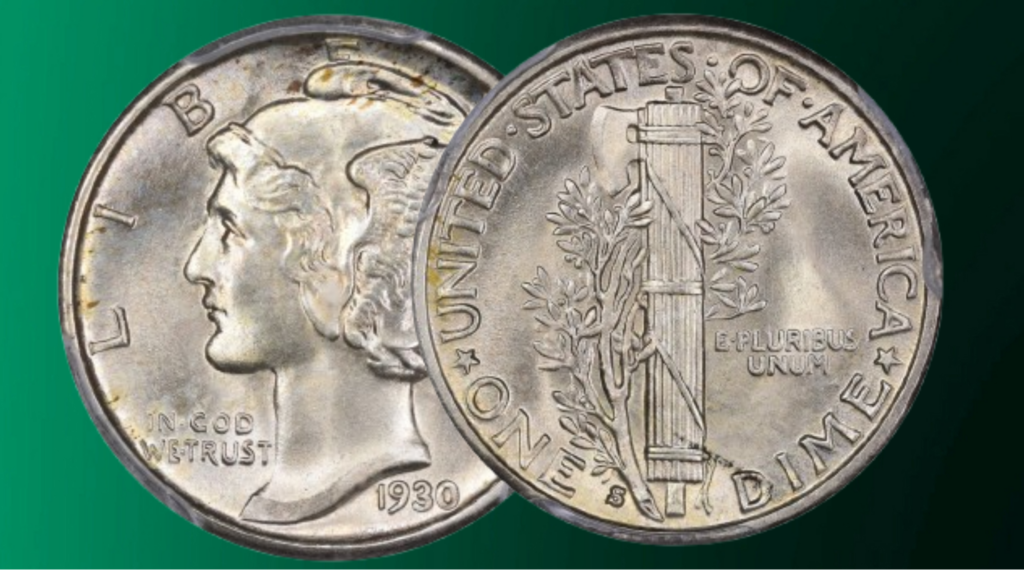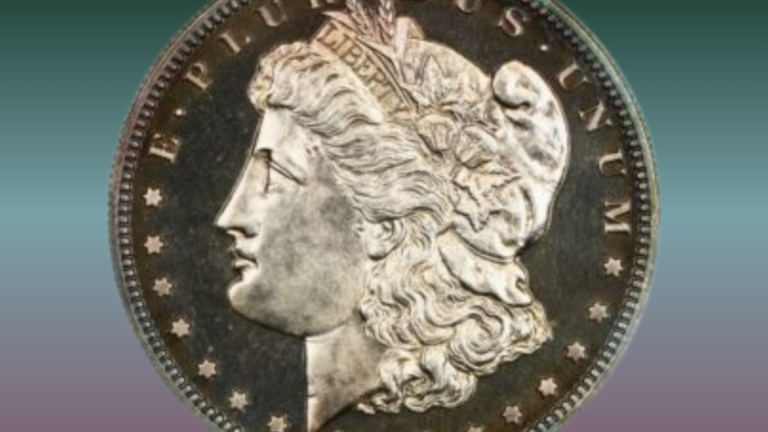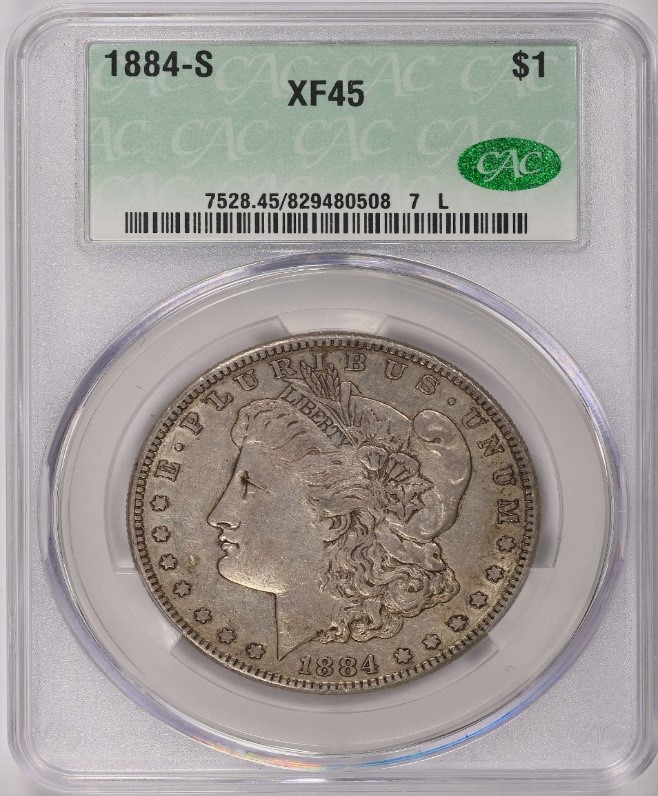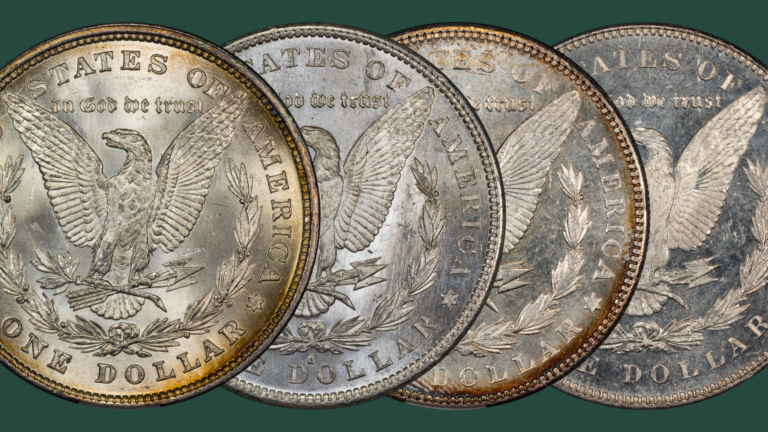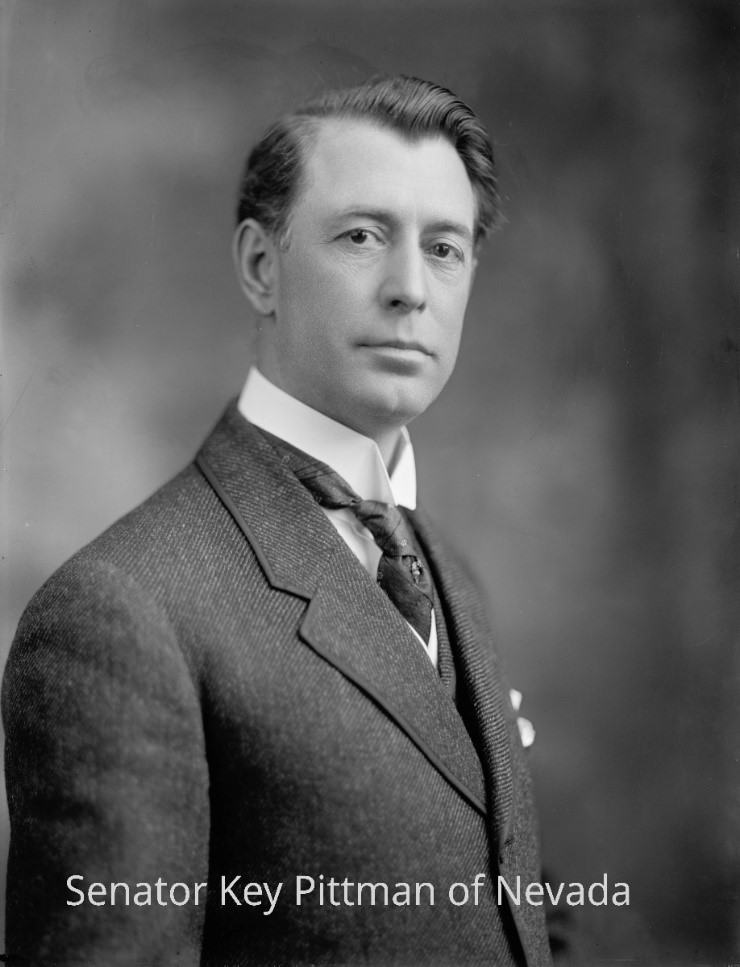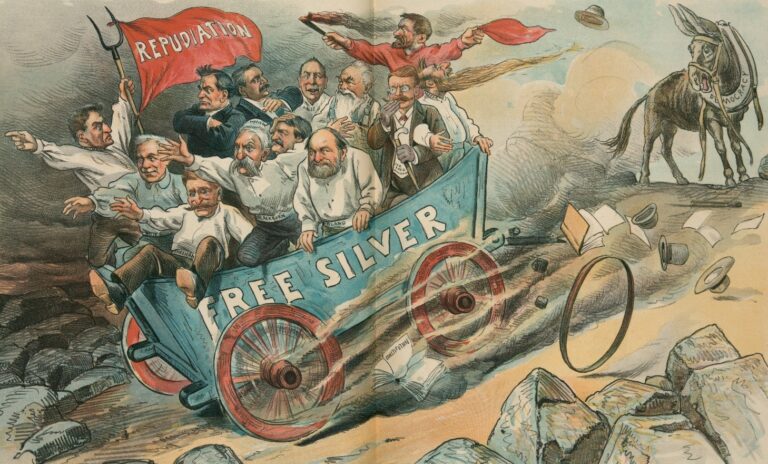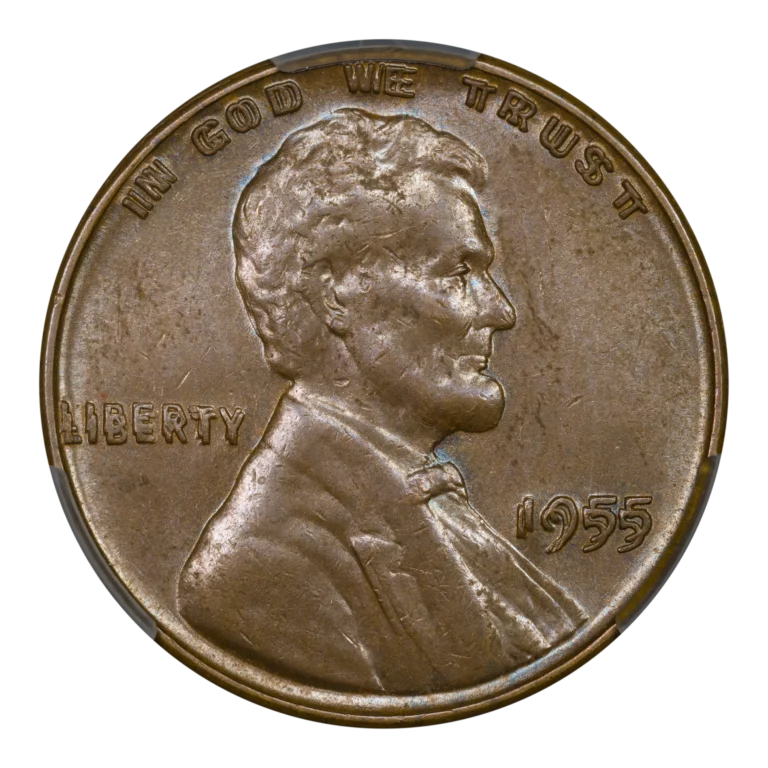by Greg Reynolds
This is the third in a series on assembling a set of Mercury dimes (Mercs), from 1916 to 1945. Regarding dimes of the 1930s, the emphasis is upon MS-65 and higher grade coins.
For many dates before 1930, there can be substantial financial savings if MS-64 or MS-63 grade Mercury dimes are purchased rather than MS-65 and higher grade coins.
Most dates from the 1930s are plentiful in uncirculated (‘Mint State’) grades and many of those that grade below MS-65 are not submitted to grading services. CAC approved MS-63 grade Mercury dimes minted after 1933 are rare, and there are not all that many CAC approved MS-64 grade post-1933 Mercs either. While pursuing Mercs from the 1930s, it makes sense to focus on MS-65 and MS-66 grade coins, with the idea that budget-minded collectors may occasionally save money by purchasing a CAC approved MS-64 grade dime.
Although Mercury dimes from the 1930s are less scarce and more available than those from the 1920s, these are not nearly as common as Mercury dimes from the 1940s. For many dates in the 1930s and 1940s, uncirculated Mercury dimes without ‘Full Bands’ are much scarcer than those with ‘FB’ designations. Even so, the ‘Full Bands’ Mercs from the 1930s tend to cost much more than their counterparts without a ‘FB’ designation. Indeed, there are cases where a CAC approved MS-65 grade dime with a ‘FB’ designation is worth two to three times as much as a CAC approved MS-65 grade dime of the same date with the same kind of eye appeal, yet without an ‘FB’ designation.
The Value of Full Bands
From a logical perspective, the short horizontal bands in the central reverse are not important aspects of the design. It is puzzling as to why so many collectors ever focused upon them.
A collector on a budget should certainly consider the Mercury dimes that do not have a ‘Full Bands’ (FB) designation. Money saved by avoiding those with a ‘FB’ designation could be used to buy more coins, perhaps to start a set of coins of another design type, a whole different series. It would not make sense, however, to spend a decade searching for a dime without a ‘FB’ designation, if a CAC approved Merc of the same date with a ‘FB’ designation can be purchased soon for less than $500, less than $150 in some cases.
The CPG-CAC estimate of a medium retail price for a MS-65 grade 1938-D is $50, without a ‘FB’ designation. Just four of these, however, are listed in the CAC population report. The CPG-CAC value for a MS-65 grade 1938-D with a ‘FB’ designation is $100, 100% more, though there are forty-four in the CAC population report. In other words, the CAC population of 1938-D Mercs in MS-65 grade is four without a designation and forty-four with a ‘FB’ designation. It might be sensible to pay an additional $50 for one with a ‘FB’ designation rather than spend a lot of time searching for a CAC approved MS-65 grade 1938-D without a ‘FB’ designation.
The 1939-S is a different matter. The CPG-CAC retail guide value for a MS-65 grade 1939-S is just $55, without a ‘FB’ designation, but the CAC population is only eleven. The CPG-CAC value for a MS-65 1939-S, with a ‘FB’ designation, is $675, and the CPG-CAC value estimate jumps to $1350 in MS-66 grade. Overall, the 1939-S is a very common coin. Of the more than ten million minted, there are thousands around now.
In grades above MS-65, the CAC pop of 1939-S dimes with a ‘FB’ designation is more than sixty, not exactly an extreme condition rarity. In MS-66 grade, the CAC pop of 1939-S dimes without a ‘FB’ destination is just fifteen and the CPG-CAC value is $80, not a vast amount, a lot less than the just mentioned CPG-CAC estimated value of a MS-66-FB 1939-S, $1350!
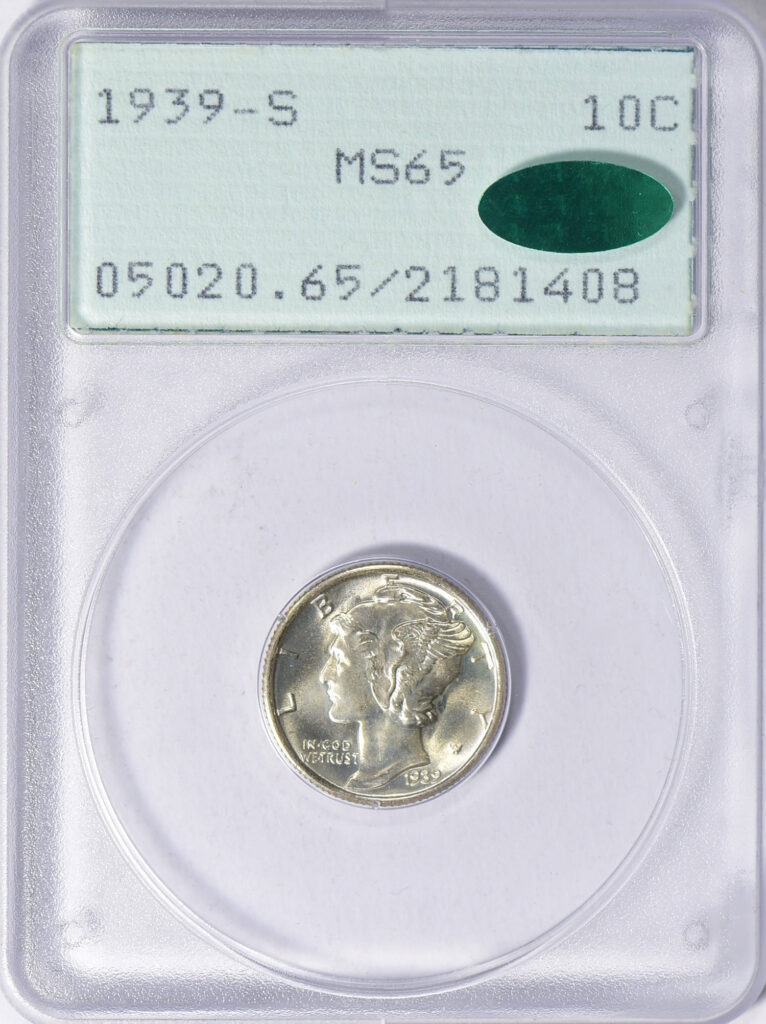
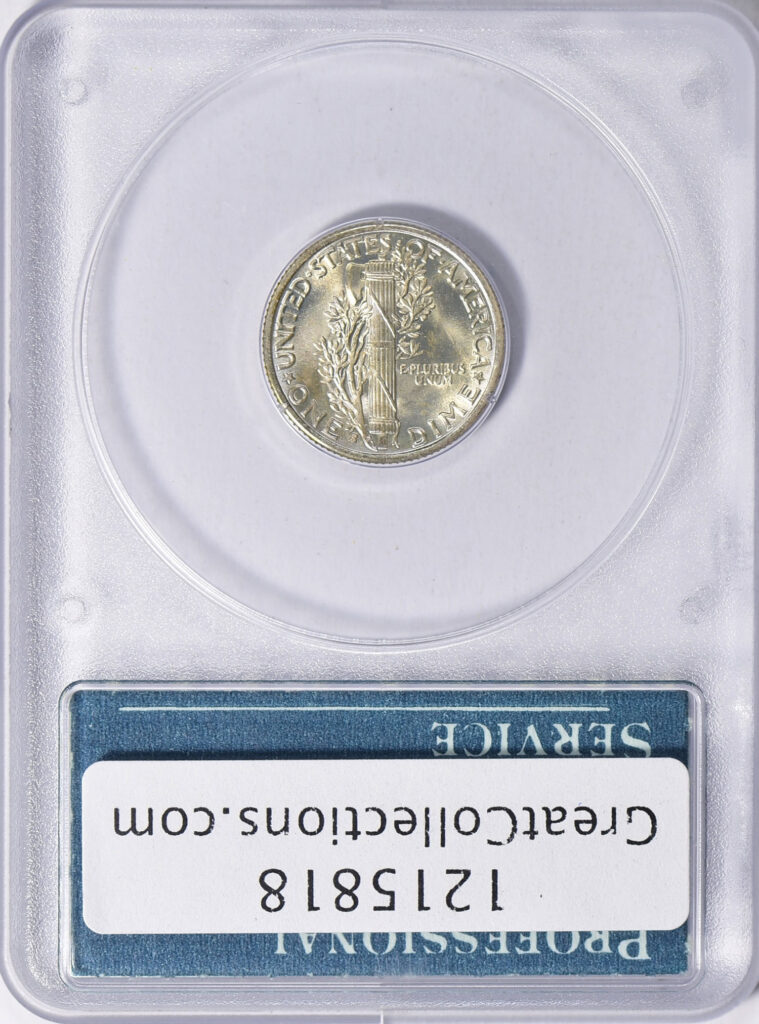
On Nov. 13, 2022, GreatCollections sold a CAC approved MS-65 grade 1939-S for $117.33, much higher than the current CPG-CAC estimate, though not a high price in the grand scheme of classic U.S. coins. On Dec. 4, 2023, GreatCollections sold a CAC approved MS-66 grade 1939-S for $192.16. In contrast, on May 7, 2023, GreatCollections sold a CAC approved, PCGS certified MS-66-FB 1939-S dime for $1540. This MS-66 grade 1939-S with a ‘FB’ designation thus sold for more than eight times as much as that MS-66 grade 1939-S without a ‘FB’ designation, 8 X $192.16 = $1537!
While dates late in the 1930s are common in general and scarce in very high grades, dime production during the whole decade merits discussion. An economic boom ended before the decade began. The onset of the Great Depression influenced demand for coins and coinage policies.

Show off Your Collection in the CAC Registry!
Have CAC coins of your own? If so, check out the CAC Registry–the free online platform to track your coin inventory, showcase your coins by building public sets, and compete with like-minded collectors!
End of the Roaring Twenties & Beginning of the Great Depression
At the Philadelphia Mint, about 19.5 million dimes were minted in 1928 and nearly 26 million in 1929. After the Great Depression manifested itself, Philadelphia Mint production of dimes was 6.77 million in 1930 and 3.15 million in 1931.
In 1928 and 1929, dimes were produced in Denver and San Francisco as well, though not nearly to the extent that they were produced in Philadelphia during the same respective years. The mintage of the 1928-D was 4.16 million, and more than seven million dimes were produced in San Francisco in 1928. The 1929-S mintage was 4.73 million and the 1929-D mintage was 5.03 million.
The 6.77 million dimes produced in Philadelphia in 1930 amounted to just 35% of the 1928 mintage there and only 26% of the 1929 mintage, 25.97 million. The 1930-S mintage was less than 40% of the 1929-S mintage, and the 1930-D mintage was zero.
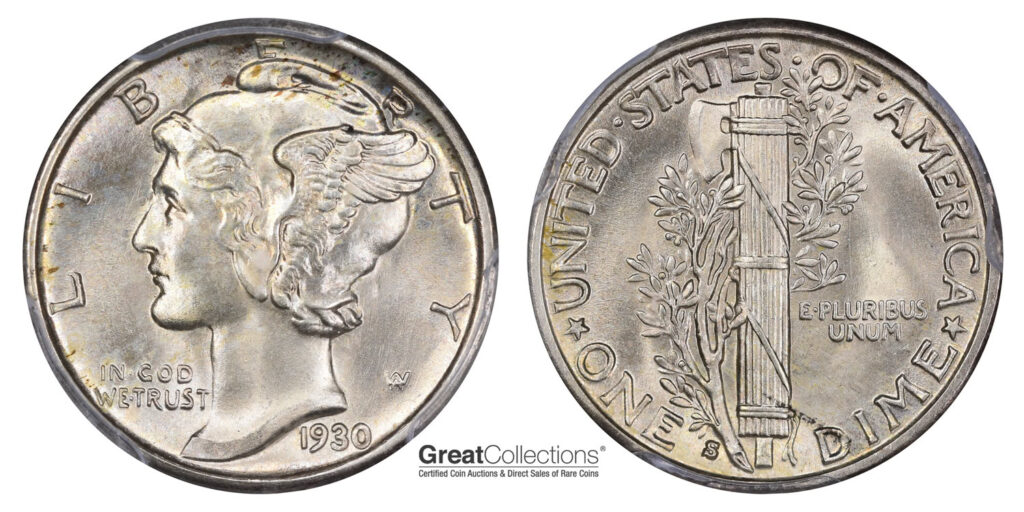
The Philadelphia Mint total in 1931, 3.15 million, was less than half of the number of dimes manufactured in Philadelphia in 1930. As the 1930-D mintage was zero, the 1931-D mintage, 1.26 million, was greater, yet it was only one-fourth of the mintage of 1929-D dimes. No U.S. dimes were minted anywhere in 1932 or 1933. As the U.S. economy had suffered, the dimes minted during the 1920s and earlier were more than sufficient for business during the early 1930s. Usually, it takes many years for a coin to wear out while in circulation.
The Early 1930s
Mercury dimes dating before 1932 constitute a topic apart from the later dates of the decade. The 1930-S, the 1931-D and the 1931-S are all scarce in MS-65 and higher grades. As it is cost-effective to send all uncirculated (‘Mint State’) dimes of these dates to grading services, and the grading service populations are small, it appears that not many 1930-S, 1931-D and 1931-S dimes were saved soon after they were minted.
On March 28, 2023, Stack’s Bowers sold a CAC approved MS-65 grade 1930-S for $384. On Oct. 16, 2022, GreatCollections sold a CAC approved MS-66 grade 1930-S for $577.50.
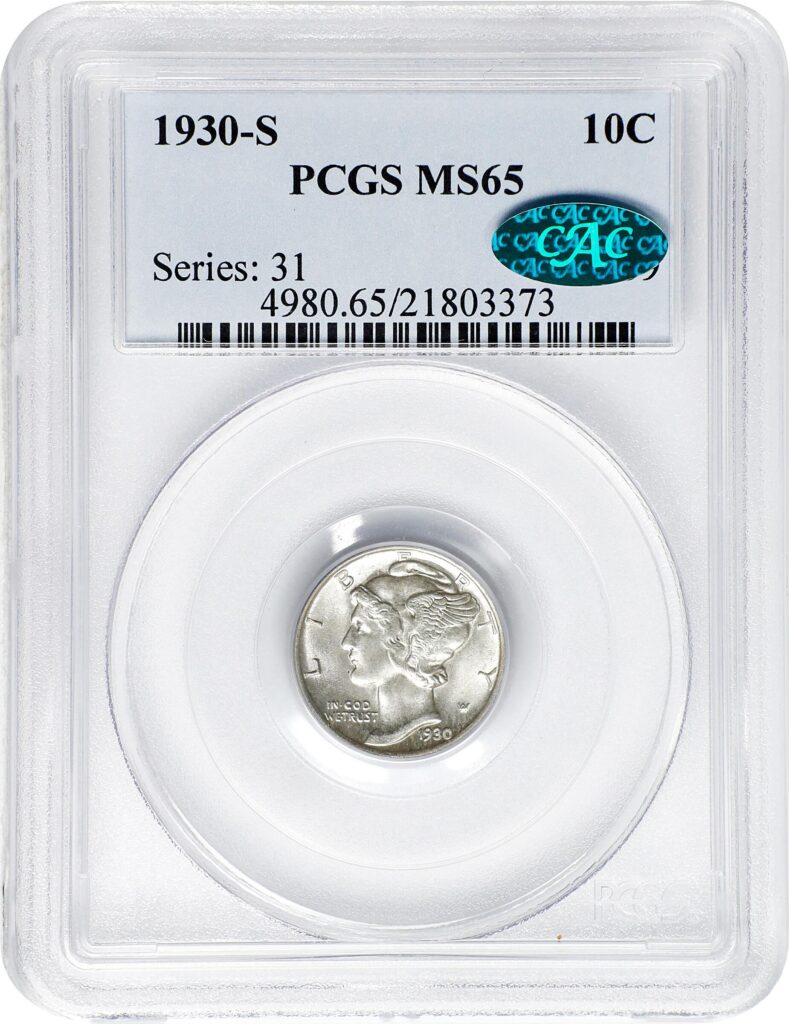
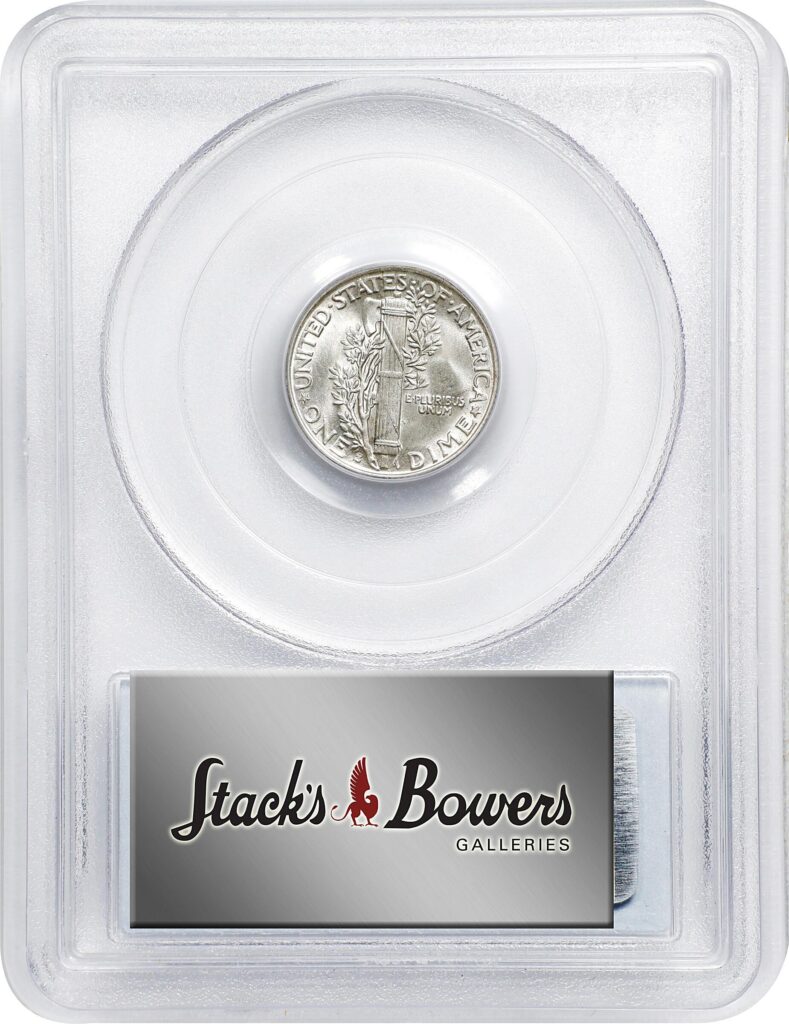
On Jan. 11, 2023, GreatCollections sold a CAC approved, NGC graded MS-66 1931-D for $507.10. On Jan. 9, 2024, GreatCollections sold a CAC approved, PCGS graded MS-66 1931-S for $555.50.grades above MS-62, and it is very hard to estimate market levels for CAC stickered or CACG graded, Choice to Gem grade 1926-S dimes. It might be a good idea to consult an expert.

Vastly Increased Mintages Under FDR Administration
U.S. coins dating from 1934 onward tend to be far more common than coins of the same design type that were minted before 1934. Of course, this is not always true. It is generally valid.
Franklin D. Roosevelt was elected president in 1932 and inaugurated in March 1933. His administration dramatically changed coinage policies and monetary policies in general, changes of a sort that had never been effected before in the history of the United States.
One new policy was to mint massive quantities of coins, more than were demanded by consumers or banks, more than were needed for commerce during the mid 1930s. Like many policies of the FDR administration, a point was for the government to spend more money and to employ more people, even if additional goods and services being produced were not really demanded. A controversial theme of the FDR administration was that various kinds of increased federal government spending, even if not clearly cost-effective, would improve society and the lives of people who lost their jobs during the early stages of the Great Depression. Although economists continue to debate the validity of such an approach, it is a fact that massive numbers of U.S. silver coins were minted after 1933, dramatically more each year than were minted during most years before 1933.
According to the Annual Report of The Director of the Mint (Washington: Government Printing Office, 1935, p. 14), for the 1934-35 fiscal year, the number of people employed by the U.S. Mint, including all branches and offices, more than tripled from June 1934 to June 1935. This was a point mentioned by veteran researcher David Lange in the past, though he did not comment on the political and economic climate, to which I am drawing attention. The increase in employment at the U.S. Mint was from 607 to 1853, even though there was not a significant increase in demand for coins for circulation during this period of around twelve months.
Mintage numbers for Lincoln cents provide an illustration of the changes in policy implemented by the Roosevelt administration. Lincoln cent mintages in Philadelphia were 19.4 million in 1931, 9.06 million in 1932, 14.36 million in 1933 and then 219.08 million in 1934, in the midst of the Great Depression. The reasons for the humongous mintage in 1934 were political not logistical.
In 1935, a record 58,830,000 dimes were minted in Philadelphia, the first mintage above thirty million since 1926, and the first mintage of dimes in Philly above fifty million since 1923. The mintage of the 1935-D, 10.48 million, was the first mintage total of dimes above ten million in Denver since 1920.
The mintage of the 1935-S, 15.84 million, was nearly nine times the mintage of the 1931-S, more than eight times the mintage of the 1930-S, more than three times the mintage of the 1929-S, and more than twice the mintage of the 1928-S. Indeed, this 1935-S mintage, 15.84 million, was the first San Francisco Mint total of more than ten million dimes since the 1920-S, 13.82 million, and the highest San Francisco Mint dime total since the 1918-S, 19.3 million.
The Philadelphia Mint production of dimes in 1936 was then mind boggling, 87.5 million. At all three mints, production of dimes for the remainder of the decade was much greater than it was during the ‘roaring twenties’! Consequently, dimes minted after 1933 are plentiful, though some are very scarce in MS-65 and higher grades.
The Mid 1930s
For almost all dates after 1933, MS-65 grade Mercury dimes with ‘FB’ designations are inexpensive. For 1934 Mercs, those without an ‘FB’ designation are CAC rarities, yet those with a ‘FB’ designation are relatively available.
It is easier to find a CAC approved MS-65-FB 1934 than a CAC approved MS-65 grade 1934 without ‘Full Bands.’ Indeed, as of October 10, 2024, CAC has approved just twenty 1934 dimes without ‘Full Bands,’ seventeen with stickers and three in CACG holders. With an ‘FB’ designation, CAC has approved 251 1934 dimes with stickers and eight in CACG holders.
In regards to the 1934-D, the difference between the ‘FB’ and non-FB CAC populations is not nearly as large, fifty-five without a designation and 101 with a ‘FB’ designation. Although the 1934-D is scarcer overall than the 1934, CAC has approved more MS-65 and higher grade 1934-D dimes, without an ‘FB’ designation, than 1934 dimes. The CPG-CAC medium retail estimate for a CAC approved MS-65 grade 1934-D, without a ‘FB’ designation, is $115. The CPG-CAC retail estimate for a MS-66 grade 1934-D is $210, and the retail estimate for a CAC approved MS-66 grade 1934-D, with a ‘FB’ designation, is more than four times as much, $850!
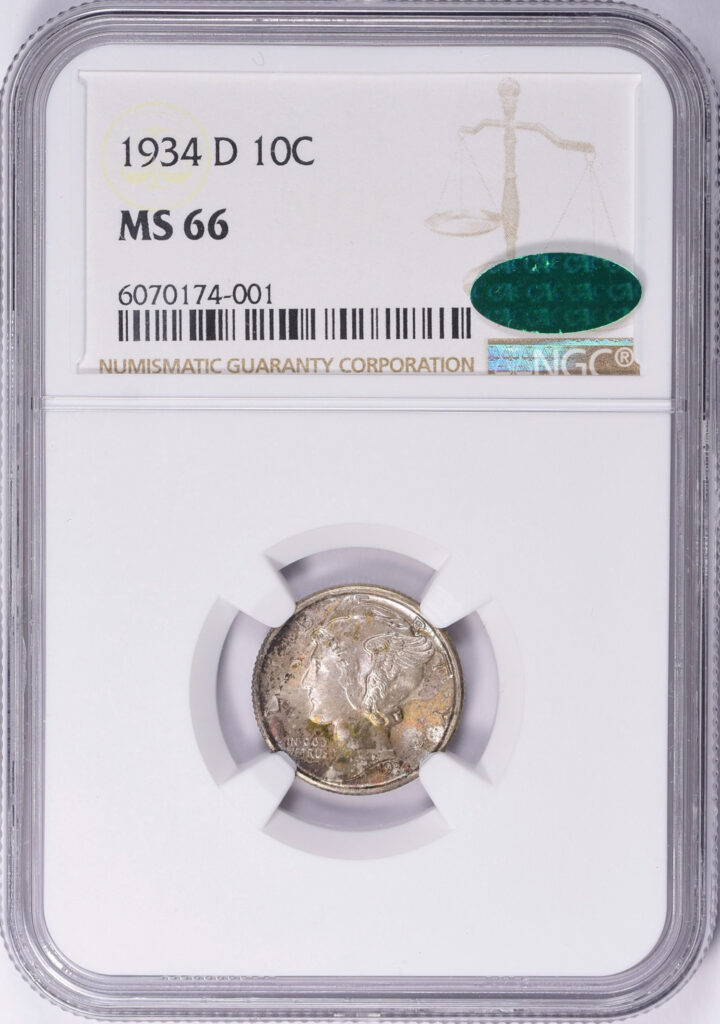
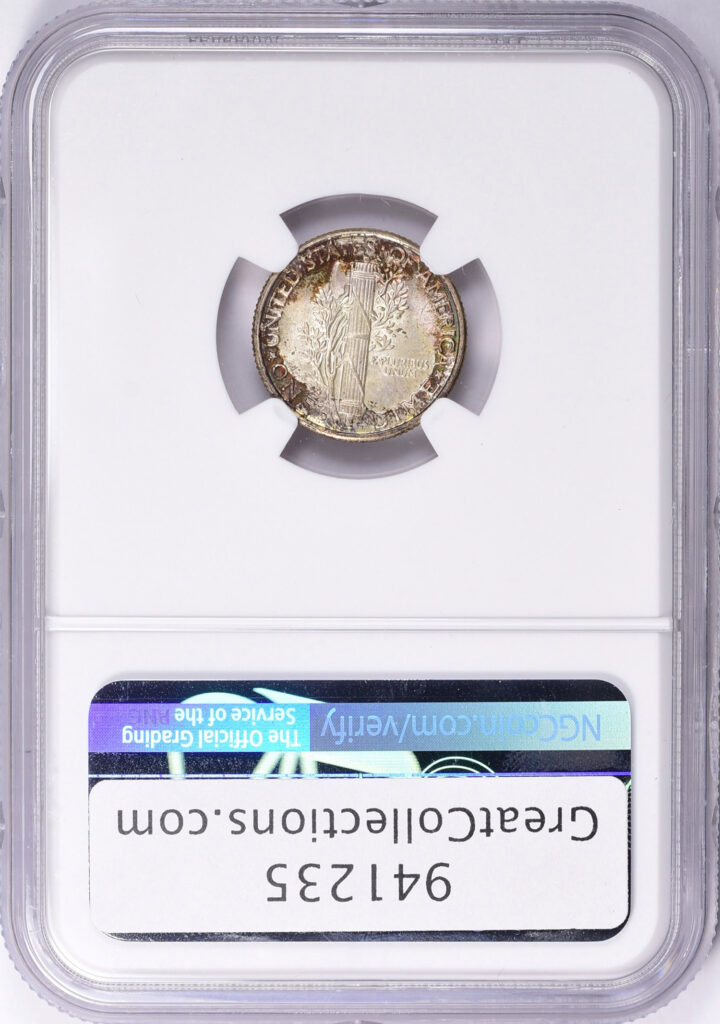
On May 21, 2023, GreatCollections sold a PCGS graded MS-66+ 1934-D, with a CAC sticker, for $440. Back in 2022, GreatCollections sold a CAC approved, NGC graded MS-66 1934-D dime for $198.
Most of the CAC approved Mercury dimes dating from 1935 to 1939 that have been publicly sold by major auction firms grade MS-67 or higher. Many CAC approved MS-65 and MS-66 grade 1935 to 1939 Mercs can be found at small to medium size coin shows or by way of favorite dealers.
Here are the CPG-CAC medium retail estimates, as of October 2024, for some Mercs from the latter half of the 1930s, in MS-65 grade without a ‘FB’ designation: 1936 ($38), 1936-D ($95), 1936-S ($55), 1937 ($36), 1937-D ($65), 1937-S ($60), 1938 ($40), 1938-D ($50), 1938-S ($55), 1939 ($36), 1939-D ($50) and 1939-S ($55). Unfortunately, the CAC populations of most of these are awkwardly low. One reason is that really nice, gem quality, common date Mercury dimes are not as plentiful as many collectors and dealers think. Another reason is that most pertinent dealers figure that it is not cost-effective to send these to CAC. Now that CACG in Virginia Beach accepts raw coins, however, the CAC population of relatively low cost Mercury dimes is likely to increase.
I suggest that interested collectors communicate demands for certified, gem quality Mercury dimes, without ‘FB’ designations. Some collectors may wish to buy some raw (not encapsulated) Mercury dimes dating after 1934 and submit them to CACG for fun. The process of submitting raw coins for grading contributes to knowledge about coins and markets for coins.
Images of coins are shown courtesy of GreatCollections and Stack’s Bowers Galleries.
Copyright © 2024 Greg Reynolds
About the Author
Greg is a professional numismatist and researcher, having written more than 775 articles published in ten different publications relating to coins, patterns, and medals. He has won awards for analyses, interpretation of rarity, historical research, and critiques. In 2002 and again in 2023, Reynolds was the sole winner of the Numismatic Literary Guild (NLG) award for “Best All-Around Portfolio”.
Greg has carefully examined thousands of truly rare and conditionally rare classic U.S. coins, including a majority of the most famous rarities. He is also an expert in British coins. He is available for private consultations.
Email: Insightful10@gmail.com
